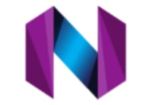
New Hire Training: Launching Your Rockets, Not Just Filling Seats
New Hiring the right candidate is just the first step. A truly successful onboarding process, with effective new hire training, is the launchpad that propels them towards becoming impactful members of your team. It’s not just about filling seats; it’s about igniting passion, fostering engagement, and setting them up for long-term success.
Why New Hire Training Matters
Think of it this way: would you throw a first-time pilot into a complex aircraft without proper training? Of course not! New hires need similar guidance to navigate the intricacies of your company culture, processes, and expectations for US JOBS or any other jobs. Effective training provides a solid foundation:
- Reduced turnover: Feeling supported and equipped leads to happier, more confident employees who are less likely to jump ship.
- Increased productivity: Equipped with the right skills and knowledge, new hires become productive contributors much faster.
- Improved morale and engagement: Feeling valued and prepared fosters a positive attitude and a stronger sense of belonging.
- Enhanced brand reputation: A smooth onboarding experience reflects well on your company, attracting top talent in the future.
Top 15 Essential steps for New Hiring Steps with Descriptions:
| Step | |
|---|---|
| 1. Identify Hiring Need: Clearly define the role, responsibilities, and skills required before starting the search. | |
| 2. Plan & Budget: Develop a recruitment plan outlining timeline, budget, and preferred hiring channels. | |
| 3. Craft Compelling Job Description: Highlight key duties, company culture, and what makes the role unique. | |
| 4. Targeted Outreach: Utilize diverse channels like job boards, professional networks, and employee referrals. | |
| 5. Application Review: Screen resumes and cover letters against defined criteria, using an Applicant Tracking System (ATS) if applicable. | |
| 6. Phone Screening: Conduct brief initial calls to assess communication skills, basic qualifications, and interest level. | |
| 7. Skills Assessment: Evaluate relevant skills and knowledge through tests, simulations, or portfolio reviews. | |
| 8. In-Depth Interviews: Conduct structured interviews with key stakeholders to assess fit, experience, and cultural alignment. | |
| 9. Reference Checks: Verify past employment details, performance, and qualifications with professional references. | |
| 10. Candidate Selection: Compare notes from various stages and shortlist top candidates for final consideration. | |
| 11. Offer & Negotiation: Present a competitive offer package including salary, benefits, and start date. Be open to negotiation within reason. | |
| 12. Background Check: Verify identity, criminal history, and other relevant information as required by company policy and regulations. | |
| 13. Pre-Onboarding: Send welcome materials, answer questions, and complete necessary paperwork electronically. | |
| 14. Onboarding Day: Introduce the new hire to colleagues, the workspace, and company culture through informative sessions and team interactions. | |
| 15. Continuous Learning: Provide ongoing training, mentorship, and support to ensure sustained engagement and professional development. |
Creating a Stellar New Hire Training Program:
1. Tailor the Experience: One-size-fits-all doesn’t cut it. Design training programs specific to each role and department, addressing their unique needs and challenges.
2. Start with the Basics: Cover onboarding essentials like company history, mission, values, policies, benefits, and tools. Use a mix of presentations, group discussions, and interactive activities to keep it engaging.
3. Skill Development: Don’t just throw them into the deep end. Provide targeted training on essential skills, software, and processes relevant to their role. Utilize a combination of instructor-led training, online modules, and hands-on practice.
4. Culture Immersion: Weave company culture into the training, showcasing your values, work style, and communication norms through real-life examples and interactive exercises for Corp to corp Jobs. Encourage interaction with colleagues to foster a sense of belonging.
5. Mentorship and Support: Assign mentors who can guide new hires, answer questions, and provide ongoing support. This personalized approach fosters learning and builds trust.
6. Feedback and Evaluation: Continuously gather feedback through surveys, one-on-one meetings, and informal check-ins. This allows you to refine your program and address any emerging concerns.

Beyond the Basics:
1. Gamification: Inject fun and competition into the training with interactive games, points systems, and leaderboards with understanding of Company services. This boosts engagement and motivation.
2. Microlearning: Offer bite-sized learning modules that are easily accessible and digestible, catering to today’s attention spans.
3. Social Learning: Encourage peer-to-peer learning through group activities, collaborative projects, and knowledge-sharing platforms.
4. Technology Integration: Utilize learning management systems, online simulations, and collaborative tools to facilitate learning and interaction.
5. Continuous Learning: Foster a culture of continuous learning by providing ongoing training opportunities, resources, and encouragement for personal and professional development.
Remember: New hire training is not a one-time event; it’s a continuous journey. By investing in a well-designed program that goes beyond the basics, you’ll launch your new hires towards success, ensuring they become valuable assets who contribute to your company’s growth and overall success.
Bonus Tip: Celebrate wins! USA Staffing Recognize and reward new hires for their milestones and achievements. This reinforces positive behavior and motivates them to continue learning and growing.
By putting these tips into action, you can transform your new hire training from a formality to a dynamic launchpad, propelling your new rockets towards a sky filled with possibilities. After all, a successful onboarding experience is the first step towards building a loyal, engaged, and high-performing workforce.
